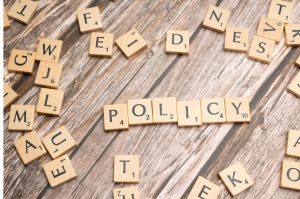I unpacked the DA’s 2024 election manifesto on education. Their main points and my scorecard, categorized as The Good/The Bad/The Workable/ Not so feasible.
Key Points from the DA’s Education Policy:
Triple the number of Grade 4 children who achieve reading comprehension levels.
Focus on improving the quality of education with basic literacy and numeracy skills from early years in school.
Encourage STEM education early identifying learners with high aptitude and place these in specialist schools.
Connecting all schools to the Internet, and free digital content.
Encourage Mother Tongue Education wherever called for by parent communities this can improve cognitive development in learners.
Support Disabled Learners – Strengthen District Offices with Specialist Staff Members to find the most appropriate solutions
Address poor-quality teaching by:
Testing teacher competence.
Enforce Independent national tests in grade 3,6, and 9.
Establishing and publishing school targets,
Targeting Schools Needing Intervention
reforming powers of trade Unions on teacher appointment to meritocracy. (replacing “Ending trade union control”)
Ensure on-time Delivery of Textbooks and Learning Materials.
Improve school governance by:
Creation of School Evaluation Bodies (mentioning potential cost implications)
Increasing the Reach of Collaboration Schools
Greater autonomy for successful schools, but with measures to prevent widening the gap between well-performing and underperforming schools.
Avoid high learner dropouts by:
Curriculum Diversification: Starting from Grade 9
A 10% reduction of the drop-out rate each year through educational interventions and support.
Improve access to post school education and training for the “missing middle” who are not poor enough for NSFAS funding but cannot afford further education.
Assessment:
The Good:
Focus on foundational skills: Building a strong literacy and numeracy foundation in early learning is essential for later long-term success, especially when teaching English language learners.
STEM education promotion: Recognition and development of talent in the areas within STEM can help to overcome skills shortages, stimulate economic growth.
Students with disabilities: Improving the learning environment for special education students to provide an inclusive system that leads to better outcomes.
Teacher proficiency: Regular testing and evaluation of teachers may be efficient enough to increase both the competency and outcome.
The Bad:
Reforming trade union influence: While aiming for a merit-based system is important, a complete overhaul of trade union involvement might face strong opposition and require a more balanced approach that ensures fair treatment of educators.
The Feasible:
Internet access and digital content: if only we managed to ensure schools had access to proper network connections (with suitable investments in place), then this advanced digital content offers infinite resources for learning.
School Evaluation Authorities: An effective implementation could improve the learning process and ensure transparency if effectively implemented, but depending on how it is done this might be costly.
The Not So Feasible:
Annual dropout rates decreased by 10%: Reducing the annual dropout rate to this target is an ambitious goal, and probably unrealistic given the systemic issues and socio-economic factors influencing dropout rates. However, targeted interventions for at-risk students, improved career guidance, and addressing socio-economic factors could contribute to a significant reduction.
In sum the DA education policy responds to several very important problems in SA education, with an emphasis on quality and inclusivity. Still, might face implementation challenges and require careful planning, and require stakeholder buy-in (if necessary) or with a more nuanced approach than the above on issues like trade union involvement.
Disclaimer: This analysis is based on the information presented in the Democratic Alliance’s (DA) 2024 election manifesto and may not capture all aspects of their education policy.




